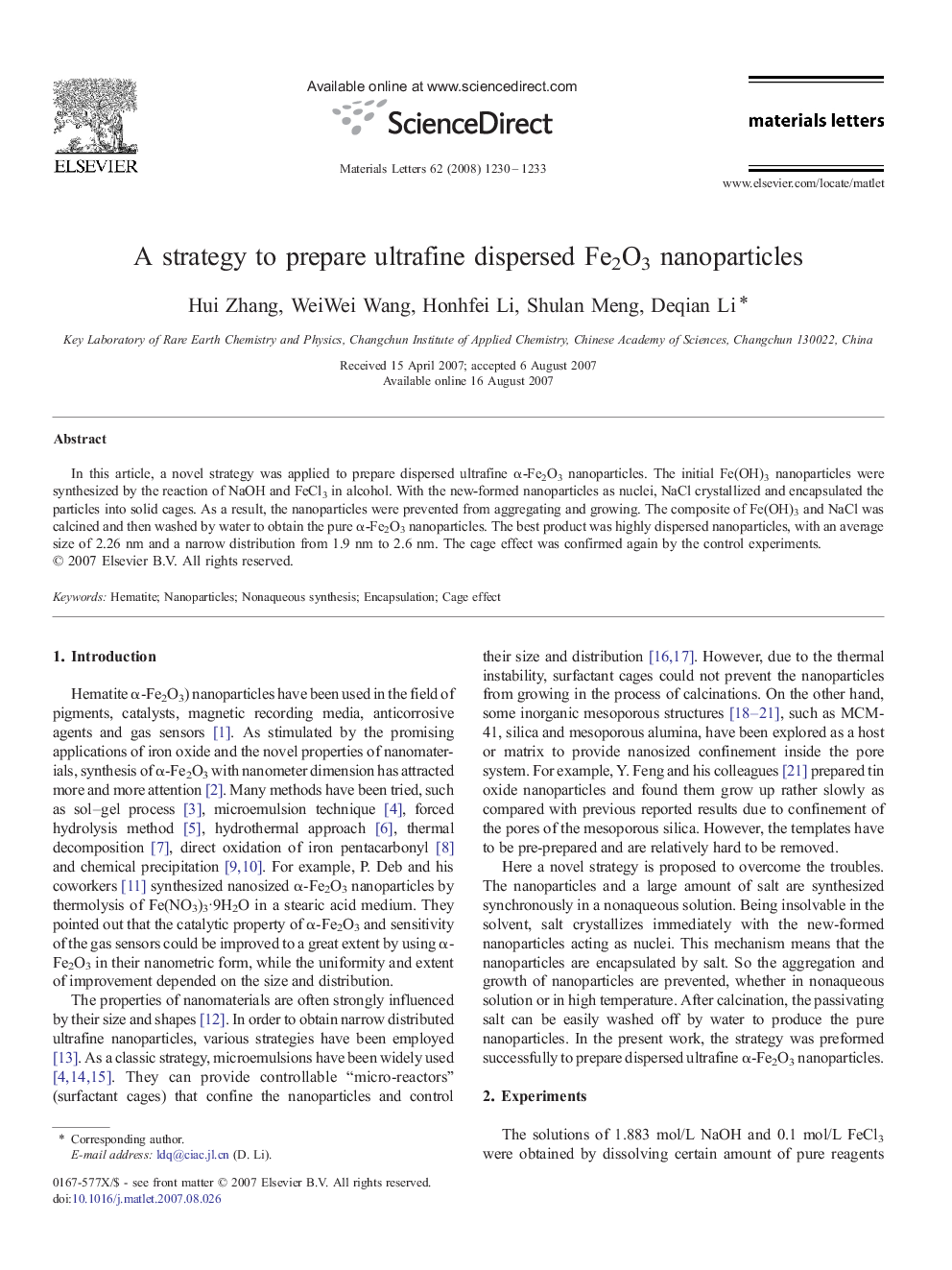| Article ID | Journal | Published Year | Pages | File Type |
|---|---|---|---|---|
| 1651608 | Materials Letters | 2008 | 4 Pages |
Abstract
In this article, a novel strategy was applied to prepare dispersed ultrafine α-Fe2O3 nanoparticles. The initial Fe(OH)3 nanoparticles were synthesized by the reaction of NaOH and FeCl3 in alcohol. With the new-formed nanoparticles as nuclei, NaCl crystallized and encapsulated the particles into solid cages. As a result, the nanoparticles were prevented from aggregating and growing. The composite of Fe(OH)3 and NaCl was calcined and then washed by water to obtain the pure α-Fe2O3 nanoparticles. The best product was highly dispersed nanoparticles, with an average size of 2.26 nm and a narrow distribution from 1.9 nm to 2.6 nm. The cage effect was confirmed again by the control experiments.
Related Topics
Physical Sciences and Engineering
Materials Science
Nanotechnology
Authors
Hui Zhang, WeiWei Wang, Honhfei Li, Shulan Meng, Deqian Li,
